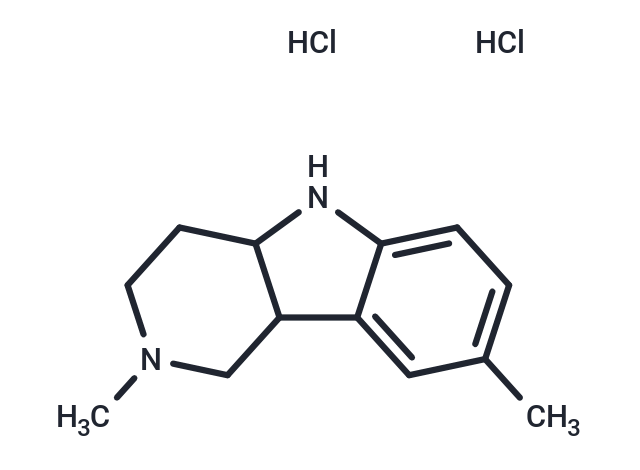Shopping Cart
- Remove All
 Your shopping cart is currently empty
Your shopping cart is currently empty
Carbidine (Carbidin) is a derivative of gamma-carboline, an atypical antipsychotic drug. It reduces the inhibitory effect of DA on the 3H-DA release from synaptosomes of the nucleus accumbens septi and on the activity of tyrosine hydroxylase in vivo and in vitro.

| Pack Size | Price | Availability | Quantity |
|---|---|---|---|
| 5 mg | $29 | In Stock | |
| 10 mg | $42 | In Stock | |
| 25 mg | $68 | In Stock | |
| 50 mg | $98 | In Stock | |
| 100 mg | $147 | In Stock | |
| 200 mg | $198 | In Stock |
| Description | Carbidine (Carbidin) is a derivative of gamma-carboline, an atypical antipsychotic drug. It reduces the inhibitory effect of DA on the 3H-DA release from synaptosomes of the nucleus accumbens septi and on the activity of tyrosine hydroxylase in vivo and in vitro. |
| In vivo | After the administration of Carbidine(5 mg/kg, i.p.), the maximal IFC of Carbidine was found to be approximately 1 mu M 20-40 min after injection. Carbidine(1 mu M, i.p.) produces elevation of dopamine release not affecting sufficiently its metabolite dialysate levels. Carbidine(0.2 and 0.5 mg/kg, i.p.) stimulated locomotor activity of non-operated rats[1]. |
| Synonyms | Karbidine dihydrochloride, Karbidin DiHCl, Carbidine dihydrochloride, Carbidin DiHCl |
| Molecular Weight | 275.217 |
| Formula | C13H20Cl2N2 |
| Cas No. | 33162-17-3 |
| Smiles | Cl.Cl.CN1CCC2Nc3ccc(C)cc3C2C1 |
| Relative Density. | 1.31g/cm3 |
| Storage | Powder: -20°C for 3 years | In solvent: -80°C for 1 year | Shipping with blue ice/Shipping at ambient temperature. | ||||||||||||||||||||
| Solubility Information | DMSO: 2.75 mg/mL (10 mM), Sonication is recommended. | ||||||||||||||||||||
Solution Preparation Table | |||||||||||||||||||||
DMSO
| |||||||||||||||||||||

Copyright © 2015-2025 TargetMol Chemicals Inc. All Rights Reserved.